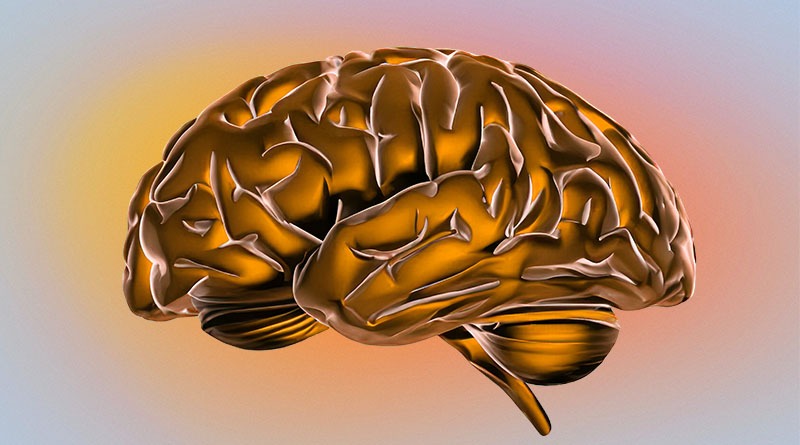
ADHD, Aging, and Memory
By Nicholas Bamonte
Just Another Thursday at the Office
As an intern at Different Brains, I regularly go to the nonprofit’s office for work. One day, after we had just finished recording an interview for the website, a member of the Different Brains team asked me a question. They wanted to know if there was any connection between ADHD and the forgetfulness that comes with old age. While I distinctly remember learning about the neuroscience of memory in college, I was a bit rusty on the specifics. After making sure that they understood that, I gave them the answer that’s almost always guaranteed to be right for 99% of neuroscience questions, “It’s complicated.”
From what I remembered there was a part of the brain theorized to be where memories are stored, but ADHD shouldn’t affect that part directly. If there was a connection between ADHD and normal age-related memory problems, then it would be through executive functions. Most people associate ADHD with problems with focusing and hyperactivity, and while those are certainly part of the condition, there are many other more subtle aspects to it that do not gain the recognition they deserve, problems with executive functions being a prime example. Executive functions are essentially the brain’s organizational skills and capabilities. Think of it as the brain’s internal secretary. They organize the vast amount of sensory information, thoughts, feelings, and memories that are constantly going through your head into a coherent pattern, filtering what is and isn’t important. In many ways, the difficulty regulating hyperactive impulses and maintaining focus associated with ADHD may very well stem from this base executive disfunction. Many brain functions deteriorate or become less refined as a person reaches an advanced age, executive functions being one of them. If you can’t keep track of or organize your thoughts and memories, then it’s natural to “forget” them. Of course, while at the office, this came out nowhere near as coherently, and with a lot more emphasis on what I couldn’t fully remember, so I was asked to do some research on the topic, and I am happy to report that the topic really does go much deeper than I gave it credit for, and that the person who asked me the question was onto something.
Fragmented, Scattered Memories
A fairly consistent pattern in neuroscience is that we first attribute certain functions to specific areas or structures within the brain, only to progressively learn that the function is far more distributed than we originally gave it credit for. Memory is no exception to this pattern. There is no one section of the brain where memory is stored, rather it seems certain types of memories are stored in different sections of the brain, or perhaps different fragments of memories are stored in different parts of the brain, and then reorganized into a whole during the process of “remembering”. These parts of the brain are the Amygdala, Hippocampus, Cerebellum, Basal ganglia, Neocortex, and last yet most relevant, the Prefrontal cortex.
Those a little more familiar with neuroscience and brain structure may remember the Amygdala as the structure of the brain responsible for regulating fear, and while fear is certainly one of its major concerns, it is actually responsible for regulating all of our emotions as a whole. Not only does its role in emotion regulation help to impact memory formation, as strong emotional connections tend to ‘strengthen’ a memory, making it less likely to be forgotten, it also stores memories related to fear within itself.
The Hippocampus is related in the formation and storage of explicit memories, memories related to specific events in your life (episodic memories) and general facts and knowledge that you have learned (semantic memories).
The Cerebellum is the part of the brain associated with fine motor control, but as a part of this primary function it seems to be related in the formation of implicit memories, or what are more colloquially known as “muscle memories”, the memories of reflexes and specific motor tasks.
The Basal ganglia is one of the main centers of motor control network of the body, though research is also implicating it in a number of other brain functions, such as emotion, reward processing, and learning. In this way, it makes sense that it also affects memory formation.
The Neocortex is the outermost part of the brain, the wrinkly bits. As a general rule of thumb, the further out from the brainstem a part of the brain is, the newer it is, making the Neocortex one of the newest parts of the brain. Appropriately, it is heavily associated with complex general information processing, thinking, spatial reasoning, language, and other “higher” order thought processes. To help facilitate these higher order processes, it seems to also serve as long term storage of memories for the Hippocampus.
The Prefrontal cortex is the front most region of the frontal lobe, and, evolutionarily speaking, is one of the newer parts of our brains. It is one of the sections of the brain most linked with what we consider more distinctly “human” mental qualities, such as impulse control, emotion regulation, behavior modification, focus and attention, organization, and working memory. The Prefrontal cortex not only stores information that we want to remember for a task that we are carrying out or feel that we may need to recall soon, it also connects to and organizes information from the other areas associated with memory, organizing the information and, if the information is deemed important enough, helping to encode the information into memories in the relevant areas. Of course, it also plays a roll in the inverse process, taking memories from where they are stored and putting them into working memory, which is essentially the process of remembering.
Unexpected Commonality
If you’ve been paying attention, you may have already predicted where I am going with this. Both ADHD and aging are associated with deficiencies in the structure and function of the Prefrontal cortex. Most effective ADHD medications and treatments deal with important neurotransmitters to the Prefrontal cortex, such as norepinephrine and dopamine, and are associated with elevated levels of these neurotransmitters and improved signaling within this area. Likewise, many studies of neuroimaging, electrophysiological, neuropsychological, and neuroanatomical have shown that the prefrontal cortex is consistently one of the areas of the brain most effected by aging, to the point where a “frontal aging hypothesis” has been formed and adopted by many, attributing the majority of age-related cognitive decline to this deterioration of the prefrontal cortex.
What started as an idle observation about undiagnosed ADHD, natural forgetfulness, and the forgetfulness that comes with aging led to a deeper understanding on my part on the nature of memory and executive disfunction. It also raises an interesting observation on neurodiversity, we really aren’t all that different. After all, that confusion, disorganization, and inability to focus that are so characteristic of ADHD seem to be a natural consequence of aging. When I think about it, there are probably a lot more neurotypical people who know what it’s like dealing with an ADHD brain then I had ever considered before, and there’s something comforting about that, to me at least.
Sources:
Parts of the Brain Involved with Memory | Introduction to Psychology (lumenlearning.com)
Learning, Recalling, and Thinking – Discovering the Brain – NCBI Bookshelf (nih.gov)
Understanding Emotions: Origins and Roles of the Amygdala – PMC (nih.gov)
Explaining the ADHD Brain: Prefrontal Cortex, Emotions, & More (additudemag.com)
Aging of the frontal lobe – ScienceDirect
Frontal Aging Hypothesis – an overview | ScienceDirect Topics
Basal Ganglia: What It Is, Function & Anatomy (clevelandclinic.org)
What is the difference between the prefrontal cortex and frontal lobe? | Socratic

My name is Nicholas Bamonte, and I am neurodivergent. My formal diagnosis’ are dyslexia and ADHD, though the aspect of neurodiversity that I have struggled with the most throughout my life is slow processing speed, which is not typically recognized as a diagnosable disorder in itself. Thanks to early intervention, I do not really remember much of my struggles with dyslexia, though the poor executive functioning aspect of ADHD and often feeling behind the rest of the crowd are a different manner entirely. A graduate of FIU with a Bachelor of Arts in Psychology, I hope to assist the millions of people who struggle with learning differences and the difficulties that come with living in a world not designed with their particular brains in mind. Even if only as an advocate who helps to spread awareness, the feeling that you’re not alone and that your condition is recognized by society goes a long way in itself.




